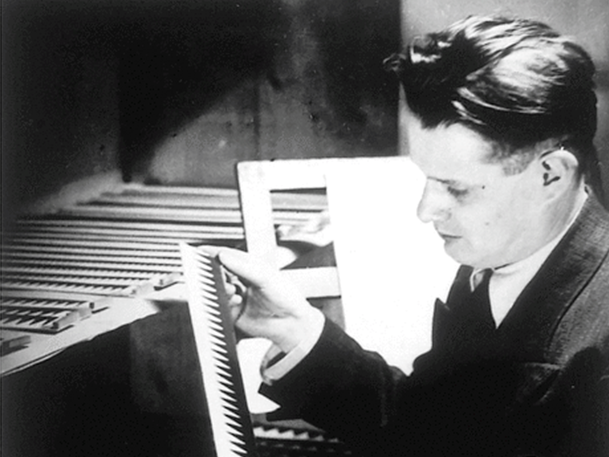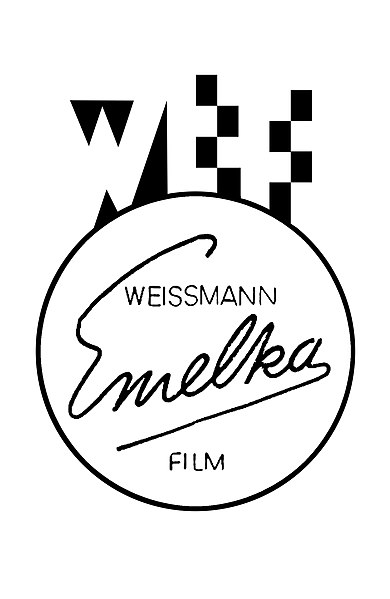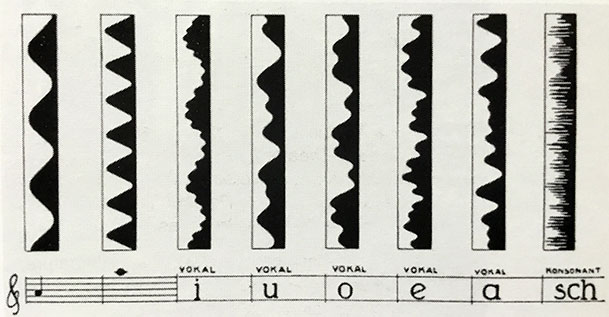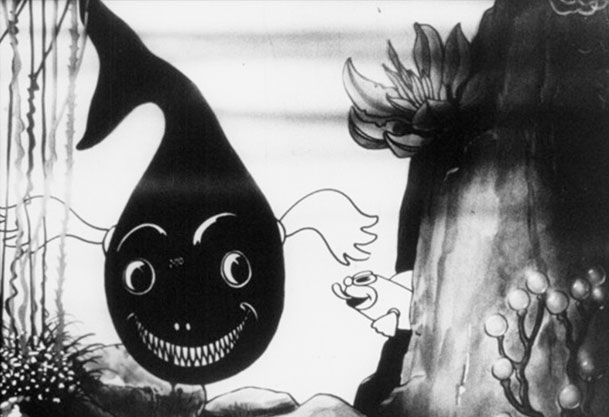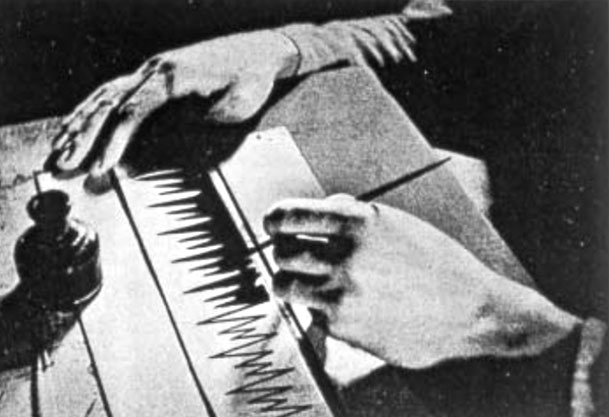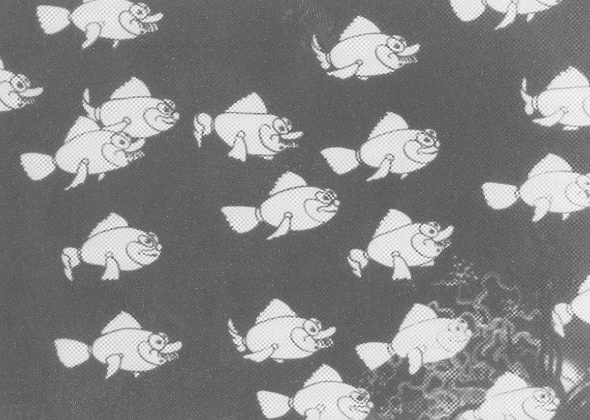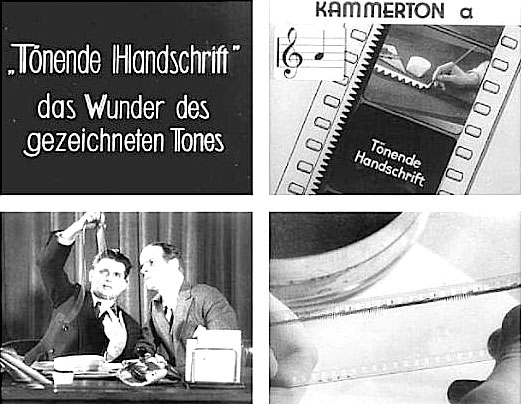Rudolf Emil Pfenninger (1899 - 1976) was one of the first people in the world to use synthetic sound. This is a short history of his life and work.
Pfenninger was born in Munich. His father was a Swiss painter—I think that he was not very popular because I haven't found any information about him. He taught his son design and drawing. Pfenninger was also interested in engineering and when he was young he built his own camera.
Pfenninger's first job was as an apprentice set painter. He also worked as an illustrator and as a projectionist in cinema theatres, so he knew well the technology and mechanics of film cameras, projectors, etc.
In 1921, Louis Seel, an American film producer and director, met Pfenninger in Germany and he hired him to draw animations and intertitles for his silent films. Seel had been producing animated films in Munich for some years. This is how Pfenninger started to work in animation.
In 1925, Pfenninger got a job in the documentary department of EMELKA, a film studio that was the main competitor of UFA—the largest German studio at the time.
At EMELKA, Pfenninger began researching radio techniques and invented improvements for loudspeakers, microphones, and other sound devices. This is what led him in the first place to research synthetic sound.
Another thing that influenced his interest was that he made experimental animation. He didn't make much money at his job, so he couldn't rent recording studios or musicians. Then he thought that maybe he could generate the sound himself.
He got an oscilloscope to study the visual shapes generated by sound. In the early 1930s, he was able to identify the graphic mark corresponding to each musical note. The next step was to draw those shapes on paper. He called it "drawn sound".
Then he photographed the shapes to include them in the soundtrack of the film. This was possible because at that time film soundtracks were optical. The sound waveform was printed on the film. To understand how optical sound works, I recommend this video
At that time, there were several people making similar experiments, especially in Russia, but Pfenninger was one of the first, perhaps the first, to generate sound from nothing. His animated film Pitsch und Patsch is believed to be the first with a synthetic soundtrack.
Pfenninger was more concerned with technique than aesthetics, unlike other filmmakers who played with similar ideas. But he also wanted to free music from musical instruments and conventions. However, most of his soundtracks were not very radical, they imitated classical music.
The first public screenings of Pfenninger's synthetic sound films took place in 1931. Most of the critics were enthusiastic about the technical aspect but felt that the sounds were disturbing and soulless.
Despite the criticism, the film programme prepared by EMELKA was launched with great hype and was so successful that it toured several European countries in 1932.
These experiments stopped because of the rise of Nazism. Nazis considered synthetic sounds to be degenerate and soulless. It's weird that their opinion was similar to that of the critics. Pfenninger was not sympathetic to the new regime and ended up leaving the film industry.
Although some of Pfenninger's films are preserved, I don't think any of them are available online. If you want to know more, I recommend you to read «Tones from out of Nowhere: Rudolf Pfenninger and the Archaeology of Synthetic Sound». https://scholar.princeton.edu/tylevin/publications/tones-out-nowhere-rudolf-pfenninger-and-archaeology-synthetic-sound%E2%80%9D

 Read on Twitter
Read on Twitter